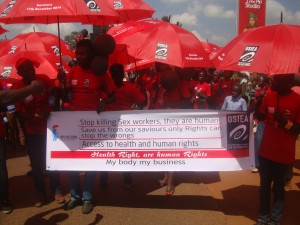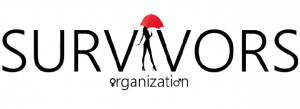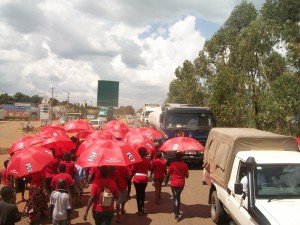Welcome! Here you can learn Advocacy Tactics used successfully by advocates for sex workers’ rights, get Documentation Tools you can use in your campaigns, and get to know Member Organizations active in the field to learn more about their victories and challenges in human rights advocacy projects.
This community is supported by the Open Society Public Health Program

Why Document Human Rights Violations?
There are many reasons why people document human rights violations. In rare cases, documenting violations and exposing them to the public can on its own put an end to abusive practices. More often, however, documentation is only part of a larger effort to end abuses. In addition, it may take years and a combination of efforts to put a stop to an abuse altogether. Advocacy efforts based on the evidence gathered through documentation should therefore identify interim goals that are realistic to achieve and that contribute in a meaningful way to creating the conditions necessary to eventually put a stop to abuse.
It is therefore important for people who document violations to be clear about what specific changes they seek, and to be realistic about what they are capable of changing. The specific changes that result from documentation are referred to as outcomes. Outcomes should be designed to respond to particular problems that documentation seeks to solve and should be targeted at particular actors. Once these problems and outcomes are identified, the documentation process typically involves the following steps:
- Designing the documentation methodology
(this differs according to the advocacy and intended audience)
• Collecting data
• Data analysis and report-writing
• Targeted advocacy
Common Human Rights Violations Experienced by Sex Workers
The Open Society Public Health Program has developed a clear and simple guide that pairs common violations experienced by sex workers with relevant provisions of major human rights treaties.
The guide, entitled Common Human Rights Violations Experienced by Sex Workers, explains briefly how human rights treaties are enforced and lists some of the most important enforcement mechanisms. It also provides a key that sex workers’ rights advocates can use to determine which rights protected by international law have been violated when sex workers have certain kinds of experiences. For instance, when a sex worker is arbitrarily arrested or detained, his or her right to liberty and security of person is violated and he or she may also experience violation of the right to equality and non-discrimination, the right to freedom from torture and cruel, inhuman, and degrading treatment, and the right to a fair trial. The guide lists these rights along with the relevant provisions of international treaties that are violated when these rights are not respected.
The purpose of the document is to make clear the connection between abusive acts commonly experienced by sex workers and international rights guarantees. By referencing the guide, sex workers’ rights advocates can present the experiences of sex workers in terms that international treaty bodies created to enforce human rights law can understand and take action on.
Documentation Tools
Rights groups can use a range of tools to document violations committed against sex workers. Here you will find examples of questionnaires that sex worker advocacy groups have developed to ensure that the way they engage with sex workers about their experiences is respectful and consistent, and results in the collection of clear and relevant data that can be used in reports or other advocacy materials. You will also find materials that describe the connection between advocacy and documentation, and share advice about the most relevant and effective targets for evidence-based advocacy projects.
For more information about the role of documentation in advocacy, see our Why Document Human Rights Violations Guide.
International and regional human rights mechanisms exist to implement human rights treaties and monitor governments’ compliance with international standards for human rights. By submitting testimony to these bodies, advocates link documentation and advocacy to achieve change. Learn more about alerting human rights bodies to rights violations.
For information about appropriate terminology to use in documentation reports, see this glossary of terms related to sexual health and rights.
Resource Guides Advocacy Tactics
Advocacy tactics are specific actions that groups take to achieve their strategic goals. These tactics are the means by which groups achieve their advocacy objectives to improve the situation for sex workers and gain greater respect for sex workers’ fundamental human rights. Sex worker groups have employed a range of advocacy tactics to forward the cause of sex worker rights. Here you will find examples from letter writing campaigns, NGO shadow reports exposing rights violations, NGO advocacy reports aimed at bringing about concrete legislative and policy changes, and real life examples of groups using strategic litigation as an advocacy tactic.
- Country Reports
- Letter Campaign
- Media Sensitization
- Police Sensitization
- Strategic Litigation
- UN Advocacy
- Video Advocacy
Member Organizations
We are working together to end human rights violations against sex workers.
Bar Hostess Support and Empowerment Program (BHSEP), Kenya
Center for Rights Education and Awareness (CREAW), Kenya
Survivors Organization Busia. Kenya
Healthy Options Project Skopje (HOPS) and the Coalition for Protection and Promotion of Sexual and Health Rights of Marginalized Communities (the “Sexual and Health Rights Coalition”), Macedonia
Jazas, Serbia
Keeping Alive Societies’ Hope (KASH), Kenya
Legalife, Ukraine
Sex Workers’ Rights Advocacy Network (SWAN), Central and Eastern Europe and Central Asia
Sex Workers Education and Advocacy Taskforce (SWEAT), South Africa
Tais Plus, Kyrgyzstan
Women’s Legal Center (WLC), Cape Town, South Africa
Resources
This list of resources provides information about recognizing and documenting human rights abuses from organizations that work on a range of human rights issues. Although not specific to advocacy for the rights of sex workers, these guides, manuals, and organizations provide useful tools for collecting information about abuses and developing creative and effective plans for human rights advocacy.
Guides and Manuals
Advocates for Human Rights and US Human Rights Network: A Practitioner’s Guide to Human Rights Monitoring, Documentation and Advocacy
This manual from Advocates for Human Rights and the US Human Rights Network provides comprehensive information and guidance on how to use a human rights framework to facilitate social change. The manual includes instructions for every step of the human rights documentation process, including establishing a project and its objectives, setting up and conducting interviews, formulating recommendations, and writing a report.
External Link: A Practitioner’s Guide (English)
Asia Catalyst: Prove It Documenting Rights Abuses Manual
“Prove It” is the first in a three part series of manuals, called “Know It, Prove It, Change It: A Rights Curriculum for Grassroots Groups” which will be published jointly by Thai AIDS Treatment Action Group (TTAG), Korekata AIDS Law Center in China, and Asia Catalyst in the US. “Prove It” covers such topics as how to plan a research project, obtain informed consent, conduct interviews, and manage post-traumatic stress disorder among interviewees. It comes with a supplement containing detailed lesson plans that activists can use to hold community workshops.
External Link: Prove It Guide (English)
AWID: Reference Tool for Women Rights Defenders
This compilation of resources put together by the Association for Women’s Rights in Development (AWID) lists research materials dealing with the security and protection of defenders, resources that women activists can consult concerning their wellbeing and self-care, manuals dealing with how to document and monitor violations of women’s rights, as well as manuals on the rights and mechanisms available to women human rights defenders at risk. The list also references materials that address specific themes particularly relevant to women defenders, such as sexual orientation and documenting sexual violence by state actors.
External Link: AWID Guide (English)
Equitas Manuals
The Equitas website provides access to manuals on how to conduct human rights education and reports about violations of women’s rights in specific countries.
External link: Equitas Manuals (English)
Front Line Handbook for Human Rights Defenders
The website for Front Line, the International Foundation for the Protection of Human Rights Defenders, provides several manuals that provide human rights defenders with knowledge and tools to improve their understanding of security and protection. Additionally, the “Front Line Handbook for Human Rights Defenders: What protection can EU and Norwegian Diplomatic Missions offer?” summarises the provisions of the EU Guidelines on HRDs and Norwegian guidelines on HRDs. It draws on the results of the EU’s own evaluation of the implementation of its guidelines carried out in the first half of 2006. The handbook details the ways in which the EU and Norway have committed themselves to supporting and protecting human rights defenders. It also makes suggestions to HRDs regarding how they might benefit from these policies.
External links: Front Line Manuals (English); Front Line Manuals (French)
HURIDOCS Manuals
On the website for Human Rights Information and Documentation Systems, International, advocates will find useful manuals, such as, “What is Monitoring?” “What is Documentation?” “Data Analysis for Monitoring Human Rights,” and the “Handbook on Fact-Finding and Documentation of Human Rights Violations.” There is also free HURIDOCS software for use in creating a database for managing information about human rights violations.
External link: HURIDOCS Manuals (English)
IHRA UN Human Rights Systems and Harm Reduction Advocacy Training Package
This training, produced by the International Harm Reduction Association, provides civil society groups with an introduction to human rights concepts, the UN human rights system, and skills required to engage with UN accountability mechanisms. The training involves a mix of discussions, group work, exercises, and presentations. IHRA’s training manual and the necessary exercise materials can be found at the link.
External Link: IHRA Training (English)
ILGA-Europe Advocacy Manuals and Documentation Tools
Members of the European Region of the International Lesbian, Gay, Bisexual, Trans and Intersex Association have undertaken a series of human rights documentation and advocacy projects regarding abuses against LGBTI people in specific countries and circumstances. ILGA-Europe developed its own handbook in 2008, which covers principles of human rights documentation, interviewing guidelines, advice for report writing, and a sample questionnaire. “Make it Work,” ILGA’s 2010 manual, provides a set of tools, methods, and skills which advocates can use in planning and implementing their advocacy work. ILGA-Europe has also posted documentation tools and materials useful to activists documenting rights abuses against members of marginalized communities, including guidelines for documentation and examples of interview questions.
External links: ILGA Manuals; Documentation Tools (English)
Martus
Martus software can be used for creating an encrypted database of rights violations that is backed up on a secure, remote server. The software and instructional publications, developed by the Benetech initiative, are available for free download.
External link: http://www.martus.org/index.shtml
Open Society Institute Human Rights Documentation and Advocacy: A Guide for Organizations of People Who Use Drugs
This guide aims to help activists recognize human rights abuses that are systematically conducted and condoned by state and non-state actors and silently suffered by people who use drugs. The guidebook focuses on providing activists with the tools necessary to develop a human rights advocacy plan, particularly by documenting abuses against people who use drugs.
External link: Human Rights Documentation and Advocacy: A Guide for Organizations of People Who Use Drugs (English)
Open Society Foundations: An Introduction to the European Human Rights System
The Open Society Foundations has created a brief overview of the European human rights system. The guide describes ways in which civil society groups can participate in European processes to hold states accountable for their compliance with human rights law and provides contact information and useful links to key European institutions.
Internal Link: An Introduction to the European Human Rights System (English)
UN Secretary-General’s Database on Violence Against Women
The Secretary General’s online database on violence against women is easy to use and contains primary source information about conditions women face in specific countries. It also includes a good practices section that directs visitors to examples of legislative reform and NGO projects designed to counter violence against women. The purpose of the database is to encourage the exchange of information and ideas about policies, services, and other measures to tackle violence against women.
External Link: UN Secretary-General’s Database on Violence Against Women (English)
Tactical Tech: Transforming Data into Images for Advocacy
Drawing By Numbers, a website created by the Tactical Technology Collective, is a collection of software tools and advice that organizations can use to turn information about human rights abuses into charts, maps, pictures diagrams and other visual instruments that can be used in advocacy, strategic planning, public education or training. Having something visual to present to audiences can be an effective means of convincing people of the importance of a problem and that you have the best solution. Information graphics are also useful in making large amounts of data or evidence easier to understand.
Tactical Tech worked with two sex-worker collectives in India and Cambodia to explore how data visualization could be used in advocacy campaigns for sex workers’ rights. They’ve published a write-up, the first in a series documenting the project, which explores how they collected data, analyzed it, crafted a message, and turned the information gathered into compelling visual evidence to present to a target audience.
The write-up of this case study is just one example of how organizations can use the data they collect as evidence in their advocacy campaigns. The website offers online manuals, toolkits, software and tutorials for organizations to use in crafting their own visual products using their own information about rights abuses.
External Link: Drawing by Numbers (English)
External Link: Sex worker voices: Documenting violations in India (English)
World Health Organization Guidelines on Conducting Research on Violence Against Women
These guidelines provide instructions on creating safeguards to make sure that the research participants are protected.
External Link: Guidelines on Conducting Research Against Violence Against Women (English, .pdf)
Organizations
Open Society Foundations
The Open Society Foundations work to build vibrant and tolerant democracies whose governments are accountable to their citizens. To achieve this mission, the Foundations seek to shape public policies that assure greater fairness in political, legal, and economic systems and safeguard fundamental rights. The Foundations have supported a number of sex worker organizations’ projects to document abuses and advocate for human rights.
Tactical Technology Collective
Tactical Tech is an international NGO helping human rights advocates use information, communications and digital technologies to maximise the impact of their advocacy work. Tactical Tech provides advocates with guides, tools, training and consultancy to help them develop the skills and tactics they need to increase the impact of their campaigning.
Women’s Link
Women’s Link Worldwide is an international NGO that provides technical assistance to women’s rights groups working strategically within the courts to promote gender equality through the development and implementation of human rights standards. Women’s Link assists advocates in using international human rights law in national cases and bringing cases to regional and international tribunals.


